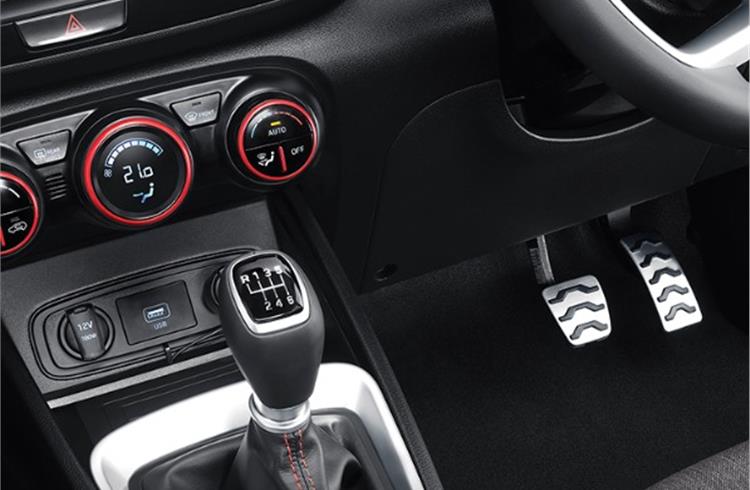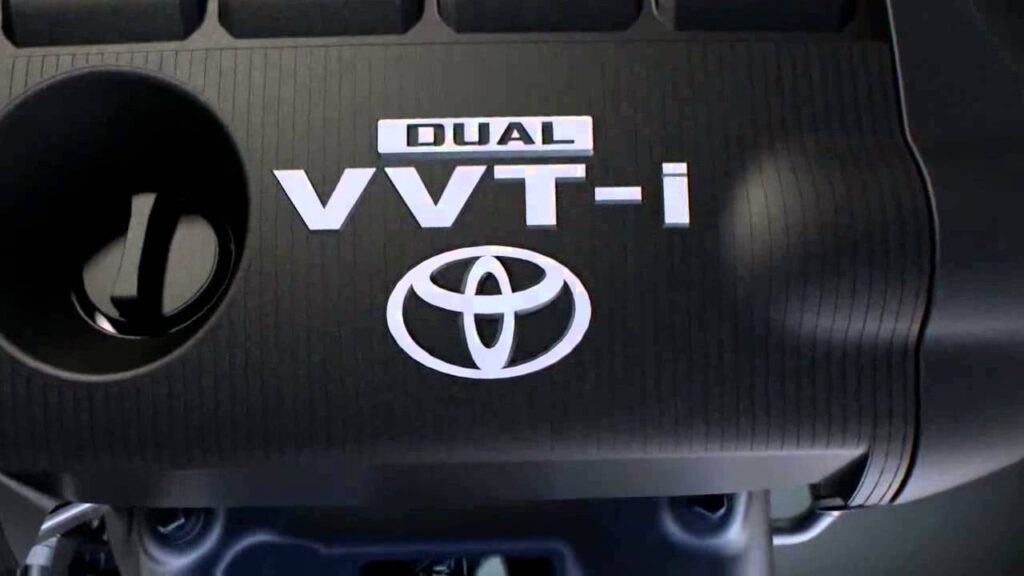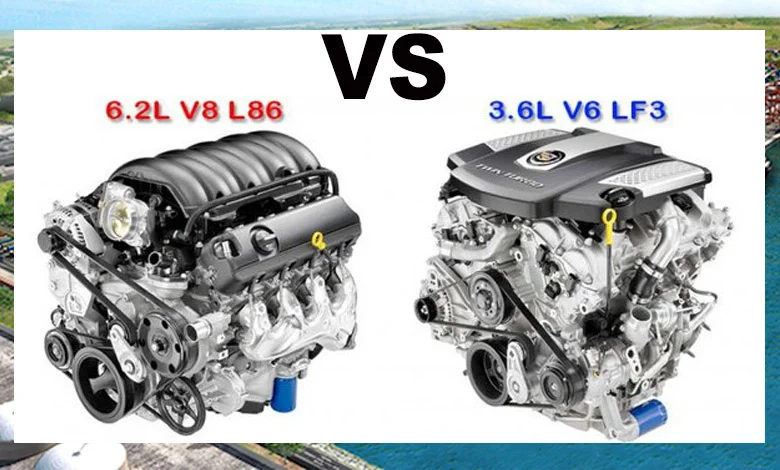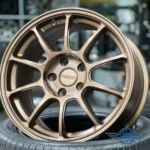

Here are the Interesting things about VVTI, iMT, V6, V8, DOHC, SOHC Explained.
VVTI, iMT, V6,V8 etc, are not alien to us, but I know we barely know the full meaning of some these terms. In this our Previous Post, we addressed some of the issues we are about to discuss now, but not as deep as we are going to dive in today.
Knowledge of some the things mentioned here are necessary not just as a Car enthusiast, but as a owner or intending owner, as it also helps when in time of need and you need assistance of any sort.
VVTI-Variable Valve Timing with Intelligence.
This is the type of variable valve timing produced by Toyota for use in many of their cars. Toyota’s VVT-i system is a variable valve timing technology that was first introduced in 1995. It was initially used with the 2JZ-GE engine, which was found in the JZS155 Toyota Crown and Crown Majesta. The VVT-i system replaced Toyota’s earlier five-valve per cylinder system, and improves engine performance by optimizing valve timing.
According to Cars.com, “Most manufacturers use variable valve-timing technology, and though the details differ, the systems all make small adjustments to when the engine’s intake valves open and close to feed an air-fuel mixture into the engine based on how the vehicle is being driven. This is done to maximize performance and reduce emissions. Some variable valve systems also work on the exhaust valves, which open to let the air-fuel mixture out of the engine.
With variable valve timing, the valves are open for shorter periods during light acceleration or idling, so less air-fuel mixture goes into the engine and helps reduce emissions. Under hard acceleration, the valves are open longer, so more air-fuel mixture feeds into the engine and increases power.
With Toyota’s VVT-i, the electronic control unit — the “brain” that manages engine operations — continuously calculates the best time to open and close the valves and activates an oil pressure valve to change the timing by altering camshaft speed.
Some Toyota engines, such as the Highlander SUV’s 3.5-liter V-6, use electric motors to change the intake valve timing, and Toyota labels those as VVT-iE (for Electric). On engines such as the 3.5-liter and 2.5-liter used in the Camry sedan, the exhaust valves also have variable timing, and those are called Dual VVT-i. Toyota says that by optimizing valve timing based on driving conditions, VVT-i increases power, improves fuel economy and reduces emissions.”

iMT- Intelligent Manual Transmission.
The iMT essentially does away with the need for a clutch pedal. To put it simply, think of driving a car with a manual gearbox but without having to press the clutch pedal every time you want to change gears. This means your left foot can basically rest while you’re driving.
Manual cars are becoming increasingly popular, as drivers seek more control over their driving experience. While it may take some getting used to, driving a manual car can be a fun and rewarding experience.The first thing you’ll notice is that there are only two pedals in the footwell – the accelerator and the brake pedal. The gear knob will also be in a different position, typically an H-pattern. To change gears, simply slot the gear knob into the desired position and shift up or down like you normally would.
To better understand how this iMT works, let’s take a look at how carandbike.com explained it.”Now, let us understand the technology behind this! Simply put, in an intelligent manual transmission, there is a clutch that exists but it is operated electronically with the help of a myriad variety of sensors and not by a clutch pedal that needs to be pressed every time one wants to change gears. In a car with iMT, there is an ‘intention sensor’ on the gear lever, which gets activated when the gears are shifted. The intention sensor on the gear lever sends a signal to the transmission control unit or TCU when the gears are changed. Then, the TCU sends a signal to the hydraulic clutch actuator to engage or disengage the clutch plate when the gear if shifted up or down. Here, the work of the actuator is to build up hydraulic pressure and transfer the same via a concentric slave cylinder (CCS) which in turn engages/disengages the clutch plate.”

Intelligent Manual Transmission, with no Clutch Pedal.
V6, V8, V10, V12
As the name suggests V engines have cylinders aligned in two banks, distributed equally, form a V shape. V engines can only be designed with even no of cylinders.
V6 has two banks of 3 cylinders,
V8 has two banks of 4 cylinders
V10, two banks, 5 cylinders
V12, two banks, 6 cylinders and so on.
According to Wikipedia, it is also explained as: “A V engine, sometimes called a Vee engine, is a common configuration for internal combustion engines. It consists of two cylinder banks—usually with the same number of cylinders in each bank—connected to a common crankshaft. These cylinder banks are arranged at an angle to each other, so that the banks form a “V” shape when viewed from the front of the engine.
V engines typically have a shorter length than equivalent inline engines, however the trade-off is a larger width. V6, V8 and V12 engines are the most common layout for automobile engines with 6, 8 or 12 cylinders respectively.”
Your car is almost automatically cool if it has a V under its bonnet. V6, V8, V10 and especially V12 are very cool engines, making loads of torque and power accompanied with a nice growl.

V6, V8
DOHC-Dual Overhead Camshaft
Dual overhead cam shaft engines are found in most modern vehicles today. They allow better airflow with less obstruction and are generally much more efficient engines than OHV or SOHC engines. Two camshafts operate 4 valves per cylinder, one separate camshaft for intake and exhaust valves. Variable valve timing and lift can be easily implemented for better fuel efficiency and power.
According to Itstillruns.com, they clearly detailed it as:” Double overhead cam, or DOHC, engines are associated with higher horsepower and increased performance. The unique design makes these engines quieter, smooth-running and more efficient.
Features
A double overhead cam engine is exactly what the name suggests: a gasoline combustion engine with two cam shafts located above each row of cylinder heads. The DOHC design is often compared to overhead valve (OHV) designs that put the cylinders above the cam shafts, and single overhead cam engines, or SOHC, in which only one camshaft drives the valves.
Identification
It’s not necessary to have two camshafts to have multiple inlet or exhaust valves on each cylinder, nor do all DOHC engines have multi-valve cylinder heads. In fact, the first double cam engines had only two valves per cylinder. Most today, however have between three and five valves per cylinder. Engines with eight cylinders or more, like the Bugatti 16-cylinder engines, have more than one bank of cylinder heads, but because each has two camshafts per cylinder head they are considered DOHC engines even though they have more than two camshafts in total.
Function
The DOHC engine design is used to increase the efficiency of the engine. An engine can only produce as much drive power as it can generate energy in its combustion chambers, and this is largely determined by the airflow in the chambers. The dual camshafts allows for twice as many valves per cylinder, maximizing the engine’s output without increasing its overall volume.
The Facts
At highway cruising speeds an engine can easily be spinning at 3000 revolutions per minute, meaning that a valve in the engine would be opening 1500 times per minute, or 25 times per second. Using more camshafts to actuate the valves makes the valve train lighter and reduces the drag on the system. It also allows more valves to be present on each cylinder. Cars with more valves tend to be quieter and stronger torque at high speeds.
Types
DOHC engines were first designed on two cylinder engines, but evolved with the straight-8 and the modern V6 and V8 engines. Many designs come in different versions, with the single cam varieties having exactly half as many total valves and appearing in lower performance models. Engines that have five valves per cylinder will have two on one camshaft and three on the other. An example of the added power of DOHC engines is the difference between the sedan and family models of Dodge and Chrysler, which use a single overhead cam version of the Mitsubishi Cyclone V6, and the 3000GT and Stealth980s which use a DOHC version of the same engine to provide extra horsepower.”
SOHC-Single Overhead Camshaft
Single overhead cam or overhead cam engines have a single camshaft installed in the cylinder head. The valves are operated directly by the camshaft and it is much easier to maintain precise timing at higher RPM and 3 or 4 valves per cylinder. One or Two exhaust valves are operated by the camshaft while two intake valves are operated by oil pressure. On a SOHC engine, it is difficult to implement variable valve timing separately for intake and exhaust valves.
The camshaft rotates in real-time. The valves are either directly operated through the lifters or by the rocker’s arms. The Single Overhead Camshaft activates both the exhaust valves and the fuel intake. This means that there are at most two valves in a cylinder that resembles and acts like a pushrod engine.
The two valves are controlled simultaneously, meaning that the SOHC engines work similarly to their pushrod counterparts. The SOHC is, however, more robust since it does not have the integral risk of floating and bent pushrods. Single Overhead Camshafts engines use a timing belt to keep the camshaft and crankshaft synced. It is also possible to have a SOHC 4 valve but this translates into a complicated combination of cam lobe shapes and rocker’s arms.
The upside of using the SOHC engines is that they are cheaper and easier to manufacture. They are also much lighter compared to DOHC engines. The maintenance cost of SOHC engines is less since only a few parts are used in the configuration.
Add a comment Cancel reply
Comments (0)
koupit kamagra bez předchozího skriptu přes noc
online lékárna dodání kamagra
získejte vzorek zdarma kamagra
buy xifaxan generic order
buying xifaxan cheap genuine
buy xifaxan generic health
how to buy rifaximin without prescriptions canada
order rifaximin price discount
buy cheap rifaximin generic online usa
cheapest buy staxyn generic version
get staxyn generic release date
cheap staxyn generic available
only fildena free consult
where to buy fildena in the usa without a prescription
get fildena generic equivalent buy
how to get itraconazole prescription on line
ordering itraconazole canada with no prescription
pfizer itraconazole canada
canadian gabapentin sales
order gabapentin buy adelaide
buy cheap gabapentin overnight
Online pharmacies no perscription dutasteride
buy cheap dutasteride cheap prescription
buy cheap dutasteride uk buy over counter
online order flexeril cyclobenzaprine toronto canada
how to order flexeril cyclobenzaprine generic low price
ordering flexeril cyclobenzaprine retail price
how to buy androxal australia purchase
buying androxal cost effectiveness
how to buy androxal generic brand
walmart kamagra prix
acheter kamagra et cealis en ligne du canada
kamagra expédié la nuit sans ordonnance
how to buy enclomiphene usa where to buy
buy cheap enclomiphene purchase online uk
purchase enclomiphene uk cheapest
Meaning and Use of "S" Shift "+" and "-" in automatic Cars - AutoTrendInfo
[…] transmissions, as it is an intersection or meeting point between a manual and an Automatic, as you can change your gear without a Clutch pedal, and also not limited to the Rigid gear […]
Categories
- Auto Detailing (25)
- Car News (26)
- Car Reviews (26)
- Classic Cars (24)
- Uncategorized (1)
Recent Posts
Related posts


Tyres and Wheel Maintenance for Your SUVs.

Differences between Mud Guards, Mud Splash and Mud Flaps.








